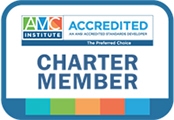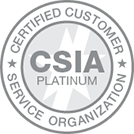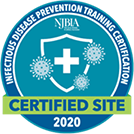When redesigning a website, it may be tempting to dive right into the fun stuff like colors, layout, font and messaging. While they are all important aspects of how your website is received, there are some nitty-gritty pieces that need to be fleshed out first. Things like audience, brand, processes and vendors, among other things, are really the parts of your website that you should be thinking about first. The rest will come with time.

BRAND. Put your website aside for a moment and think about your organization’s brand. Do you know your brand inside and out? Are you familiar with all aspects of what makes your brand? You will want to make sure that everything matches. Your logo, letterhead, social media sites, email signatures, etc. should all reflect who you are as an organization. Make sure when you’re redesigning your website that the design stays within the same look and feel.
AUDIENCES. You should get to know your target audiences and break them out into buckets. Think about potential members, current members, strategic partners, your members’ customers, etc. Each group of people may be coming to your site for a different reason. Make sure that each one has a place to go. Create user stories for each of these buckets and map out how you think their visit would pan out. This will help you determine where to focus your time on content creation as well.
FUNCTIONALITY. What do you want your website to be to your visitors? Should it act as an online brochure, showcasing your mission, vision and core values? Will it act as a self-service center for members? A place where they can pay their dues, check calendars, read the latest press, etc. What about using your website as a community where your members can interact with each other through forums and discussions? Maybe your website is a mixture of everything. It is essential to understand the end point of what you want to accomplish before you start thinking about the site design.
PROCESSES. Besides how your website will serve as a content library, member resource center and online brochure, think about what kind of processes you would like to accomplish with the site. Maybe you’re trying to set up an automation process for membership renewal and dues collecting. Or maybe you will be using a section of the website for your annual conference and you want to accept registration and payment through the site. These are both tasks that could be easily taken over by your new website, leaving more time for less logistical tasks.
You should also think about whether you would like your site to tie into a database. If it’s going to be collecting information, where will the information go? Does it need to be real time? Can it be a 24- hour turnaround? Think about how soon you need the information that you are collecting, after it is submitted.
RESEARCH. Once you’ve given all of the above terms some thought, do some research to compare against your notes. Look at what other associations or organizations are doing on their websites. Pay attention to what kind of functionality is visible on their site (maybe most of what they offer is hidden behind a login, for members only). What do you like and not like about their website? If they’re using their site to collect data, what are they asking for? Could you benefit from the same type of call to action? Write down your pros and cons and get a feel for what is user friendly.
IDENTIFY YOUR SOLUTIONS. Now that you have everything figured out and you’re ready to start building, there are a few factors that need to be considered before starting your design. You might have the option of in-sourcing or out-sourcing the project. Decide what will be most efficient in both time and cost as well as skill. Designing a website is about much more than just hiring a web developer. You will want your developer to be seasoned in analysis and integration – especially if you plan to use a database. If you do hire a developer to work in-house, keep in mind that once the website is launched, this person will need more tasks as the workload will significantly drop. Out-sourcing is project based and may be ideal for what you’re trying to accomplish.

The best way to determine who would be the best developer is to look for a specialist who works in your industry and builds websites for organizations similar to yours. They know the nature of your business and your audience which will save you time, money and training.
If you plan to outsource, you will need to put together a request for proposal (RFP), shows all the features, details and skills that you’re looking for. By creating the best possible project scope and clearly articulating the needs from all of the items mentioned above, you will get a more accurate timeline and price. This makes a huge difference when trying to find the best vendor for your needs.
When deciding on a vendor, get your team involved. Ask your team members to analyze the proposal based on the project you laid out and have them rank each vendor based upon criteria. Use the sample chart below to help with this process. It’s an important one, as this will determine who you work with to create a new website for your organization.

MONITORING YOUR PROJECT. Stay involved! You don’t need to micromanage but don’t turn it over to a web team and expect it to be completed without any further information. The more willing you are to answer questions and provide feedback, the closer you will get to the product you envision. You should also get your volunteers involved. Form a technology committee or even a task force and request feedback from them in phases. You can also ask them to perform testing on the site to make sure the functionality makes sense to not only you and your developer, but your volunteers and members.
CONTENT CREATION. This may be something that you should be thinking about earlier than the monitoring phase but you likely have some content that you will be able to move over onto your newly branded site. You want to make sure that there are some new content pieces for your members to read while they browse all the new features. Keep it consistent and continue to generate content on a regular basis. Make this a number one priority in your re-brand.
RELEASE PLAN. Celebrate your new site! Don’t just launch and pop a bottle of champagne. Get your volunteers excited, promote it via newsletters, emails and social media, sponsor contests and be enthusiastic! Once you’re live with your new site, listen to feedback. Understand the difference between suggestions and bugs. React to bugs immediately and consider all suggestions for future development.
You are now ready to re-brand your website and give your web presence a modern, advanced makeover!




